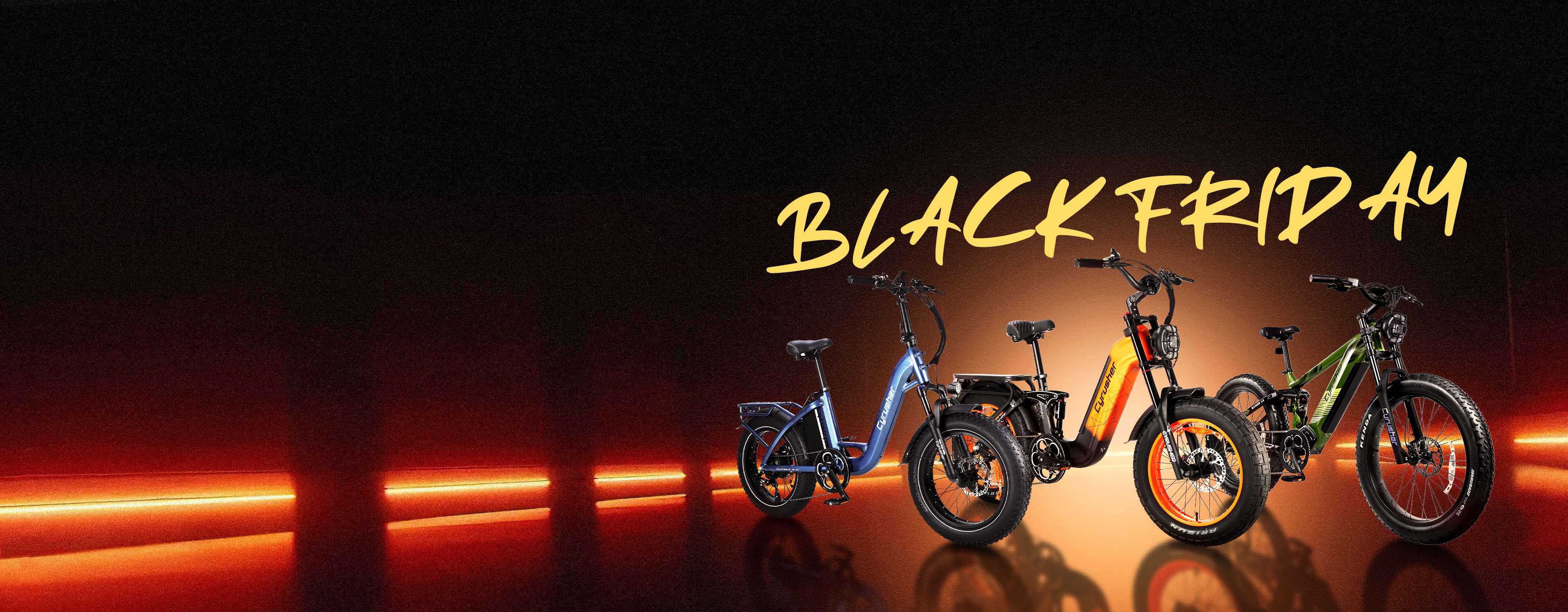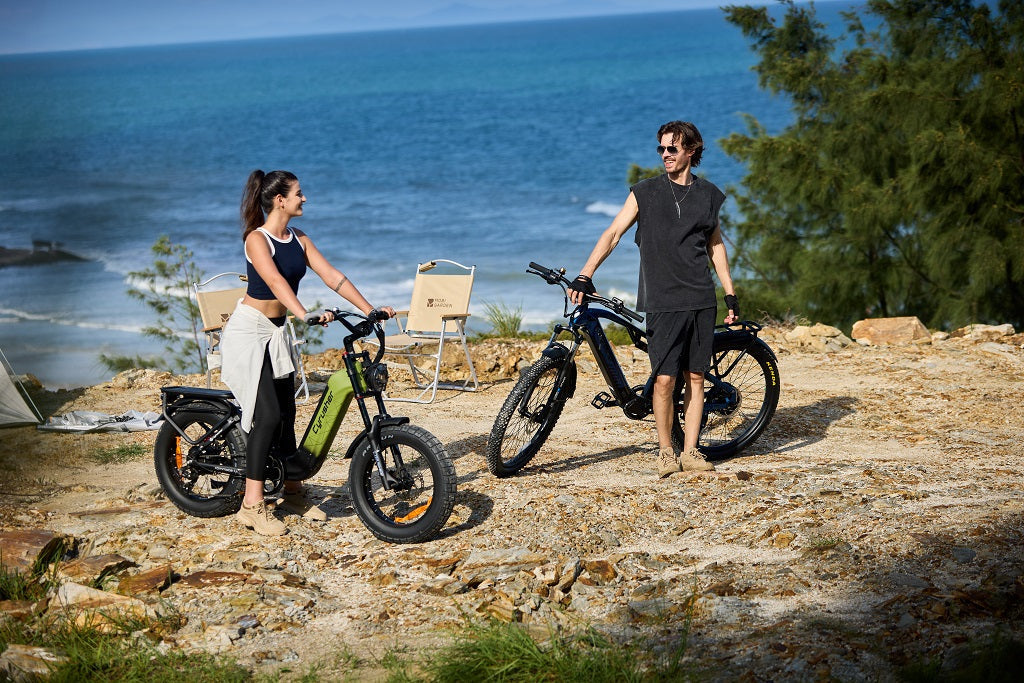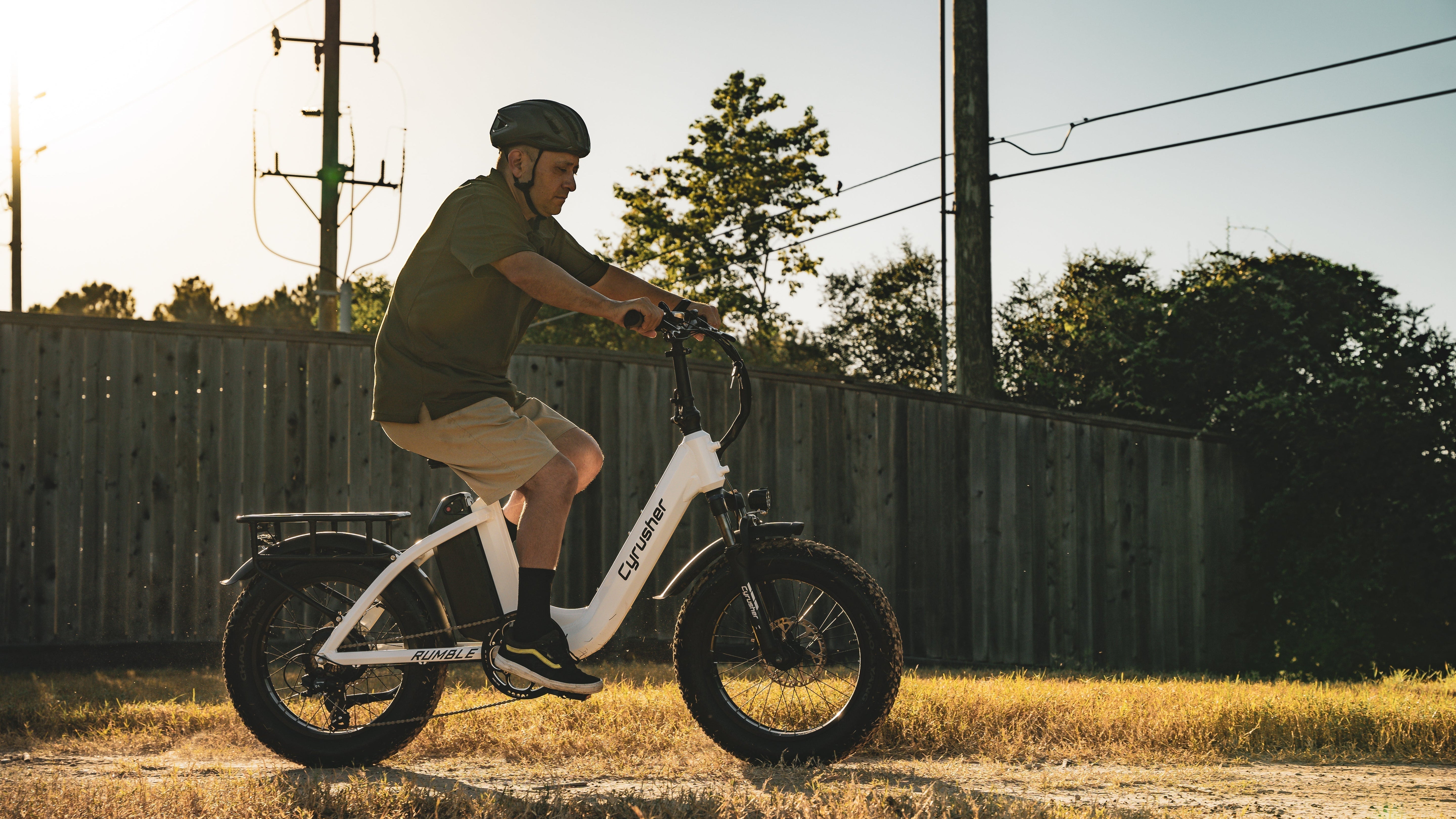Ebikes have changed the traditional bicycle industry by providing an environmentally friendly and efficient means of transportation. The frame material plays a pivotal role in an e-bike's durability. The two primary e-bike frame materialsonthe market are carbon fiber and aluminum alloy, each of which has its own unique advantages and disadvantages. This article aims to compare these materials and give riders more comprehensive information to consider when making a purchase.
What is the frame of an e-bike?
The e-bike frame serves as the foundation for the entire model. It offers crucial structural support and significantly impacts the bike’s weight and durability and the overall riding experience. Bicycle frames are comprised of various welded components, including the top tube, down tube, seat tube, rear dropout and rear top fork. These collectively influence the bike's stability and maneuverability. Manufacturers utilize diverse materials and construction methods for frames, acknowledging the distinctive properties each material offers and employing specific techniques to craft different frames.

Basic frame construction:
Fundamental frame construction involves certain key components. The top tube spans from the headset to the seat tube and is crucial for horizontal stability and weight distribution. In addition, the downtube links the headset to the bottom bracket, ensuring vertical stability and impact resilience.
The seat tube serves as the anchor for the seatpost, reinforcing the bike's overall structural strength. Connecting the bottom bracket to the rear axle, the chain complements the seat tube in enhancing the bike's equilibrium by linking the seatpost to the rear axle.
Common e-bike frame materials:
The majority of e-bikes in the common market are made with aluminum alloy due to its exceptionally lightweight nature and stability. Nevertheless, certain models built for superior performance incorporate high-quality materials like carbon fiber. Besides aluminum and carbon fiber, several other materials can be found in e-bike frames. Familiarity with these materials can broaden a consumer’s understanding of the available options in the market.
Carbon fiber frame:
Basically, carbon fiber is a composite material comprised of carbon filaments. It offers exceptional strength and is very lightweight. Its distinct properties facilitate intricate designs, improved aerodynamics and versatile molding capabilities. It strikes a balance between stiffness and comfort, rendering it an optimal choice for crafting e-bike frames.

Aluminum alloy frame:
Recognized for its durability and cost-effectiveness, aluminum, while inherently soft, is commonly used in the form of an alloy for e-bike frames. This alloy combines aluminum with other metals, forming a sturdy material that is ideal for e-bike production. Although not as lightweight as carbon fiber, aluminum frames ensure robustness and affordability without compromising overall performance, making them a favored choice across various models.
Steel frame:
Renowned as the traditional material for bike construction, steel boasts exceptional strength and longevity. Despite being heavier than those made of carbon fiber or aluminum, steel frames excel in shock absorption, providing a smoother ride experience. Additionally, they are comparatively more economical and easier to mend than frames made of other materials.
Titanium frame:
Titanium frames strike a balance between strength, durability and lightweight attributes. They show exceptional resistance to corrosion, enduring harsh weather conditions while maintaining optimal performance. However, titanium frames often come with a higher price tag. Riders seeking high-end long-lasting options frequently opt for titanium frames.
While carbon fiber and aluminum hold sway in the market owing to their widespread availability and durable characteristics, hybrid frames like steel and titanium cater to niche preferences due to their distinctive qualities. That said, this article primarily aims to compare the two most common types, carbon-fiber frames and aluminum frames, offering a clearer frame of reference.
Carbon fiber vs aluminum frame
Ride quality and comfort:
Carbon fiber frames excel in dampening vibrations, particularly on uneven terrain, providing a smoother and more comfortable ride. In contrast, the stiffness of aluminum frames may lead to feeling more road vibrations, potentially impacting rider comfort during extended journeys or on rough surfaces.
Durability and maintenance:
Carbon fiber frames are highly resistant to corrosion and impact, so will maintain their structural integrity over time. Nevertheless, compared to aluminum frames, repair options for carbon fiber can be limited. Aluminum frames, while also durable, are relatively simpler to maintain and repair, often at a more affordable cost.
Weight and performance:
The difference in weight between carbon fiber and aluminum significantly impacts e-bike performance. Carbon fiber's lighter weight results in a bike with better acceleration, maneuverability and energy efficiency, surpassing those with aluminum frames.

User experience considerations:
Value for money:
E-bikes equipped with aluminum frames generally offer a more budget-friendly option compared to those with carbon fiber frames. This affordability appeals to a broader spectrum of riders.
Customization and design:
The malleability of carbon fiber facilitates the creation of stylish and customizable designs, catering to users who prioritize aesthetics and seek unique appearances in their choice of e-bike.
Purpose of use:
Carbon fiber frames tend to suit enthusiasts seeking top-tier performance, while aluminum frames may be more fitting for recreational riders or those mindful of budget constraints, depending on their riding preferences.
Carbon fiber e-bike
Carbon fiber e-bikes, compared to aluminum ones, can be widely different in both performance and price. For instance, let’s look at two different models. The Cyrusher brand introduced the groundbreaking Hurricane, the first mid-drive e-bike design featuring a carbon fiber frame, catering to riders seeking peak performance. The utilization of carbon fiber in the Hurricane's frame construction improves the vehicle's impact resistance, thereby enhancing the overall riding experience for cyclists.
Complementing the advanced bike frame structure, the Hurricane e-bike has top-notch components similar to those found in high-end models. Propelled by a robust 1000w mid-drive electric motor, the Hurricane achieves superior weight distribution within the frame. This gives it enhanced maneuverability and allows it to use energy more efficiently. With dual air shock absorbers and high-quality hydraulic brakes, riders can operate the bike safely while demonstrating a more agile and dynamic riding style.
When comparing the Hurricane with the Nitro, an aluminum-framed mid-drive e-bike within the Cyrusher category, the Hurricane has a higher price tag and is more suitable for riders willing to make a larger investment.
For cyclists not specifically seeking a carbon fiber frame, the Nitro remains a viable option that offers solid riding performance and a high-quality riding experience. It still is able to excel in challenging riding activities like hill climbing.

Choosing a suitable e-bike frame material
Selecting the optimal e-bike frame material means thinking about personal preferences, riding style, terrain and budget limitations. Carbon fiber distinguishes itself with its lightweight and performance-oriented characteristics, appealing to high-performance enthusiasts. Conversely, aluminum offers comparable advantages like stability, durability and cost-effectiveness, catering to the requirements of most riders.
Understanding the differences in these materials helps riders make informed choices that match their preferences, whether they prioritize lightweight performance, durability, or affordability.
Conclusion
In a comparison between carbon fiber and aluminum e-bike frames, carbon fiber emerges as the top choice for riders valuing performance, comfort and design flexibility. The combination of lightweight strength and exceptional vibration absorption means carbon fiber e-bikes can offer a better the riding experience. On the other hand, aluminum frames have gained popularity as a common choice for everyday riding due to their sturdy properties and their affordability that makes them widely accessible.
Ultimately, the selection of e-bike frame material hinges on personal preferences, riding requirements and budgetary constraints. However, for those seeking the epitome of e-bike technology and performance, ebike with carbon fiber frame stand out as a premium choice in the e-bike market.










Share:
The benefits of step-through ebikes
The Most Special Christmas Gift Electric Bike